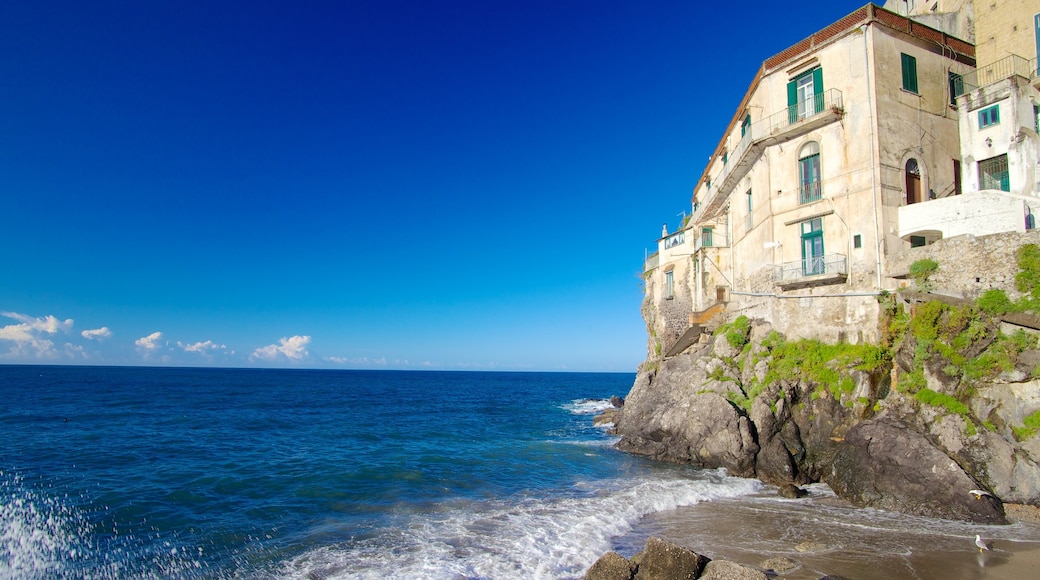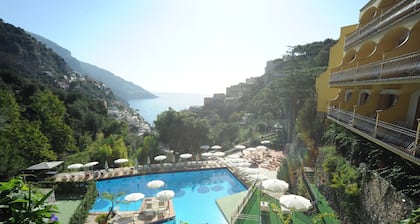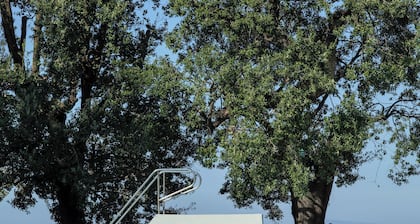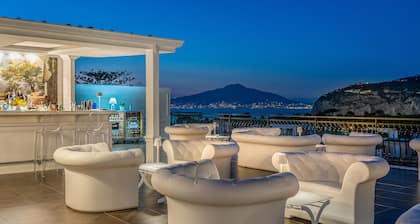Minori
Panduan Perjalanan





Kunjungi Minori

Hotel Royal Positano
Via Pasitea, 344, Positano, SA
Harga adalah RM723 semalam dari 22 Apr hingga 23 Apr
RM723
RM836 jumlah
termasuk cukai & fi
22 Apr - 23 Apr
Stay at this 4-star hotel in Positano. Enjoy an outdoor pool, breakfast (surcharge), and room service. Our guests praise the helpful staff in our reviews. Popular ...
7/10 Good! (700 ulasan)
"Una piacevole vacanza"
Diulas pada 20 Apr 2025

Parco dei Principi Hotel
Via Rota, 44, Sorrento, NA
Harga adalah RM1,728 semalam dari 27 Apr hingga 28 Apr
RM1,728
RM1,951 jumlah
termasuk cukai & fi
27 Apr - 28 Apr
Stay at this 5-star luxury hotel in Sorrento. Enjoy free breakfast, free WiFi, and an outdoor pool. Our guests praise the helpful staff and the property condition ...
8.8/10 Excellent! (883 ulasan)
"The hotel was beautiful, feels like you are on a cruise ship with the sea facing rooms! Wonderful staff, delicious food and walkable to everything!"
Diulas pada 15 Apr 2025

Majestic Palace Hotel
Corso Marion Crawford 40, Sant'Agnello, NA
Harga adalah RM781 semalam dari 22 Apr hingga 23 Apr
RM781
RM899 jumlah
termasuk cukai & fi
22 Apr - 23 Apr
Stay at this 4-star business-friendly aparthotel in Sant'Agnello. Enjoy free breakfast, free WiFi, and 2 bars/lounges. Our guests praise the bar and the helpful ...
9/10 Wonderful! (250 ulasan)
"Staff were all fantastic and great dining experiences. Concierge and front desk were sooo helpful with excellent guidance for exploring the area. Highly recommend this hotel. The roof top outdoor lounge has incredible panoramic views with a very relaxing atmosphere."
Diulas pada 18 Apr 2025
Harga satu malam terendah ditemui dalam masa 24 jam yang lalu berdasarkan penginapan 1 malam untuk 2 orang dewasa. Harga dan ketersediaan tertakluk pada perubahan. Terma tambahan mungkin dikenakan.

Eden Holiday Minori
Via Petrito, Minori, SA
Stay at this residence in Minori. Enjoy free WiFi, an outdoor pool, and 3 beach bars. Popular attractions Villa Rufolo and Atrani Beach are located nearby.
8.4/10 Very Good! (9 ulasan)
"A nice roomy apartment with a really nice terrace. Well worth the climb. Loved having a washer."
Diulas pada 26 Sep 2024

Majestic Palace Hotel
Corso Marion Crawford 40, Sant'Agnello, NA
Stay at this 4-star business-friendly aparthotel in Sant'Agnello. Enjoy free breakfast, free WiFi, and 2 bars/lounges. Our guests praise the bar and the helpful ...
9/10 Wonderful! (250 ulasan)
"Staff were all fantastic and great dining experiences. Concierge and front desk were sooo helpful with excellent guidance for exploring the area. Highly recommend this hotel. The roof top outdoor lounge has incredible panoramic views with a very relaxing atmosphere."
Diulas pada 18 Apr 2025

Villaggio Campeggio Santa Fortunata Campogaio
Via Capo 39, Sorrento, NA
Stay at this 4-star beach campground in Sorrento. Enjoy free WiFi, free parking, and a private beach. Popular attractions Piazza Tasso and Sorrento Beach are ...
7.8/10 Good! (325 ulasan)
"The campground had a nice restaurant and laundry room, and transportation to town on bus lines and taxis. The cabins were comfortable and the views over the bay were great! We thoroughly enjoyed our time at the campground!"
Diulas pada 21 Nov 2024
Harga satu malam terendah ditemui dalam masa 24 jam yang lalu berdasarkan penginapan 1 malam untuk 2 orang dewasa. Harga dan ketersediaan tertakluk pada perubahan. Terma tambahan mungkin dikenakan.
Tempat popular untuk dilawati
Villa Romana
Anda boleh pelajari tentang sejarah tempatan Minori dengan singgah ke Villa Romana. Bersiar-siar di kawasan tepi laut dan pantai yang cantik di kawasan romantik ini.
Sentiero dei Limoni
Anda boleh meluangkan masa untuk melawat Sentiero dei Limoni ketika anda berkunjung ke Minori. Bersiar-siar di pantai di kawasan aneh tetapi menarik ini.
Villa Romana e Antiquarium
Anda boleh pelajari tentang sejarah tempatan Minori dengan singgah ke Villa Romana e Antiquarium. Bersiar-siar di taman yang cantik atau lawati katedral yang mengagumkan di kawasan romantik ini.